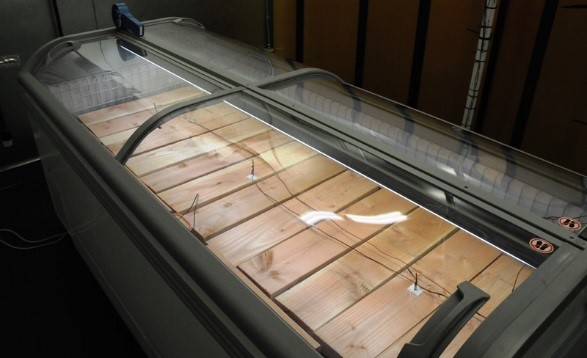Project Info
COMPLETE
 Project Title
Project Title
 Project Title
Project Title
Laboratory Assessment of Propane Type Horizontal Self-Contained Display Cases
Project Number ET15SCE1030 Organization SCE End-use Process Loads Sector Commercial Project Year(s) 2015 - 2017Description
This laboratory assessment compares the performance of low-temperature horizontal display case with natural refrigerant (propane or R-290) and conventional refrigerant (R-404A).
Project Report Document
Loading PDF Preview...
